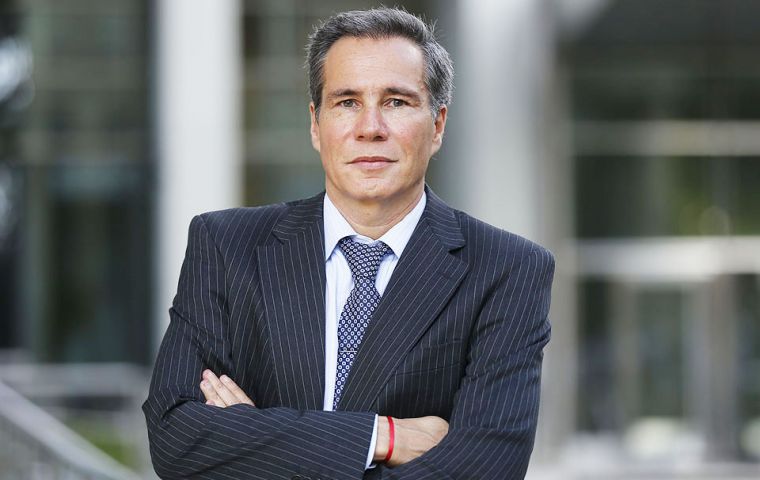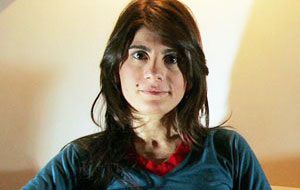MercoPress. South Atlantic News Agency
Israel newspaper questions Nisman’s accusations against Cristina Fernandez and Timerman
 Nisman was “known among his colleagues for his close ties to Argentina’s intelligence services”, which “have been involved in every dirty operation you can imagine.”
Nisman was “known among his colleagues for his close ties to Argentina’s intelligence services”, which “have been involved in every dirty operation you can imagine.”  ”In 2006, based mostly on foreign intelligence reports, Nisman accused the Iranians of sponsoring the attack, allegedly carried out by Hezbollah militants” argues Mochkofsky.
”In 2006, based mostly on foreign intelligence reports, Nisman accused the Iranians of sponsoring the attack, allegedly carried out by Hezbollah militants” argues Mochkofsky. Israeli newspaper Haaretz has published an article questioning the criminal accusation filed by late AMIA prosecutor Alberto Nisman against Argentine President Cristina Fernández and Foreign minister Hector Timerman, while asserting that the official's handling of the case was far from exemplary.
The article, written by Graciela Mochkofsky, explains some of the background to the 1994 bombing and its subsequent investigation, as well as charting Nisman's rise in the Prosecutor's Office. Mochkofsky also asserts that outside perceptions of the issue are at odds with the reality of the case.
“It is widely believed, particularly outside Argentina, that special prosecutor Alberto Nisman died because he was about to expose a criminal pact between President Cristina Fernandez and the Iranian government to cover up the latter’s responsibility in the 1994 bombing of Buenos Aires’s Jewish community center.
According to this riveting version of events, powerful forces — most likely the government he was accusing, perhaps Iran — “murdered Nisman to keep him silent”, the article begins, before claiming that this idea was discredited by judge Daniel Rafeca's rejection of the complaint.
“His 63-page dismissal is devastating: Not only was there “not even circumstantial evidence” of the alleged cover-up or obstruction of justice in Nisman’s last document, the judge wrote, but the evidence gathered by Nisman himself openly contradicted his accusations,” Mochkofsky continues.
The writer affirms that the prosecutor, found dead in his Puerto Madero apartment in January after filing the complaint, was “known among his colleagues for his close ties to Argentina’s intelligence services. The services have long been involved in political espionage, financing of political campaigns, bribing of judges and lawmakers, and every dirty operation you can imagine.”
After surviving the scandal which followed the collapse of the AMIA trial in 2004, Mochkofsky explains, Nisman was subsequently appointed as lead investigator by former President Néstor Kirchner.
“In 2006, based mostly on foreign intelligence reports, Nisman accused the Iranians of sponsoring the attack, allegedly carried out by Hezbollah militants.
In the following years, the Kirchners firmly supported these allegations, accusing Iran in international forums.”
But the breaking point, according to the author, came with the Memorandum of Understanding signed in 2013 between Argentina and Iran. Mochkofsky suggests that Nisman followed the example set elsewhere in rejecting the pact and dissenting from the government line.
“According to diplomatic cables made public by WikiLeaks in 2010, Nisman had sought the approval of America’s embassy in Buenos Aires before making any move in the case. When the Israeli and the American governments rejected the memorandum between Argentina and Iran, Nisman did, too”, she asserts.
The article also comments on prosecutor Gerardo Pollicita's entry into the case, as well as several contradictions in the accusation against Cristina Fernandez and Timerman which were documented in what the writer calls a “devastating” 63-page dismissal presented by judge Rafecas.




Top Comments
Disclaimer & comment rules-

-

-

Read all commentsMy bet that the author is Argentinian, anyone?
Mar 16th, 2015 - 12:06 pm 0@1 - yes.
Mar 16th, 2015 - 12:43 pm 0If his case was so easily and readily disproved, why was he assassinated?
1 golfcronie (#)
Mar 16th, 2015 - 12:44 pm 0Mar 16th, 2015 - 12:06 pm
Not only is she Argentine but a Kirchner extremist!!!!!
Commenting for this story is now closed.
If you have a Facebook account, become a fan and comment on our Facebook Page!